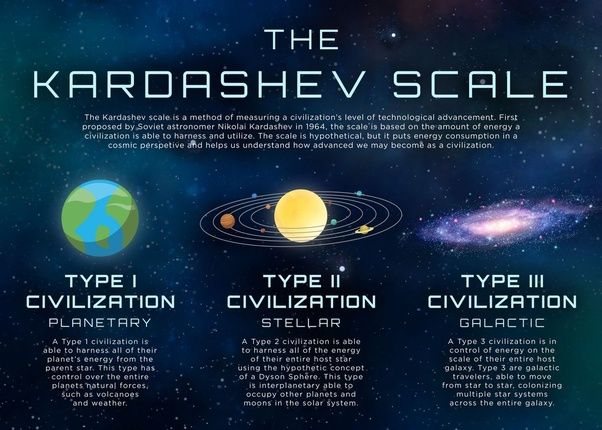In a recent post on X, Elon Musk, the visionary behind SpaceX and Tesla, declared, “Kardashev 1 or you’re not even trying.” This provocative statement refers to the Kardashev Scale, a framework proposed by Soviet astronomer Nikolai Kardashev in 1964 to measure a civilization’s technological advancement based on its energy consumption. Musk’s comment has sparked renewed discussion about humanity’s potential to evolve into a Type I civilization, but what does this goal entail, and how feasible is it?
Understanding the Kardashev Scale
Type I: A civilization that harnesses all the energy available on its home planet, including solar, wind, geothermal, and other renewable sources. It represents complete planetary control.
Type II: A civilization that captures the entire energy output of its star, potentially using megastructures like Dyson Spheres. This level implies interstellar capabilities.
Type III: A galactic civilization that utilizes energy across an entire galaxy, tapping into billions of stars. Currently, this idea belongs firmly in the realm of science fiction.
Some theorists have proposed even higher levels, such as Type IV (universal energy control) and Type V (multiversal), but these remain entirely speculative.
Humanity’s Current Standing
Currently, humanity is estimated to be at Type 0.7 on the Kardashev Scale. Significant progress has been made in renewable energy—global solar capacity increased by 24% in 2024, and wind power now accounts for 8% of electricity in major economies. Innovations like grid-scale battery storage and fusion research, supported by companies like Tesla, are pushing us closer to Type I. However, challenges such as reliance on fossil fuels, which still supply over 60% of global energy, and geopolitical tensions hinder the global cooperation essential for Type I status.
The Path to Type I: Opportunities and Obstacles
Achieving Type I status requires more than technological breakthroughs; it demands unified global governance and resilient infrastructure. Climate change, with 2024’s record-breaking heatwaves and rising CO2 levels, underscores the urgency of sustainable systems. Experts estimate that reaching Type I could take anywhere from a century to a millennium, depending on advancements in AI, energy storage, and international collaboration. Dr. Maria Alvarez, an astrophysicist at MIT, notes, “Type I isn’t just about energy—it’s about mastering planetary systems and societal harmony.”
Musk’s Vision and Its Critics
Musk’s push for Type I aligns with his broader ambitions, from colonizing Mars with SpaceX’s Starship to scaling renewable energy through Tesla’s electric vehicles and solar grids. These efforts lay the groundwork for the energy mastery Type I requires. However, critics argue that Musk’s timeline is overly optimistic. Energy policy analyst Raj Patel states, “Global unity is the real bottleneck. We’re still divided by borders and resources—Type I remains a distant dream without addressing these issues.”
Public Sentiment and Emerging Innovations
Discussions on X reflect a mix of enthusiasm and skepticism. Some users highlight breakthroughs like perovskite solar cells and small modular nuclear reactors as potential game-changers, while others point to economic disparities and political inertia as major roadblocks. One X post humorously remarked, “We’ll hit Type I when we stop fighting over the last oil barrel.” These varied perspectives underscore the complexity of the challenge.
The Road Ahead
Reaching Type I status demands unprecedented technological and cultural leaps, from mastering climate and ecosystems to potentially using AI for global governance. Musk’s challenge, while ambitious, frames a critical question: Can humanity unite to harness Earth’s full potential? For now, as a Type 0.7 civilization, we stand at a crossroads, with bold dreams tempered by formidable obstacles.
In the words of Carl Sagan, a Type I civilization represents “a planetary society, with global communications and transportation systems, with global weather monitoring and control.” In many ways, it’s the next natural step in our evolution.
And if Musk has his way, it’s a step we’ll take — or at least, one we’ll try very hard not to miss.







